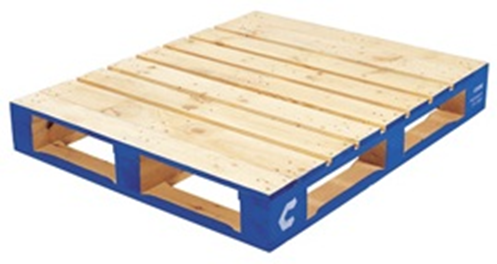9 vital things to check for in a Racking Inspection.
- Keith D Goodfellow (SARI)

- Jan 14, 2021
- 4 min read
Updated: May 13
1. Load signage. It’s vital that adequate signage is present and in the correct format so check that signage is present and correct. Load notices are required to all areas and rack configurations and should be supplied by the installer as part of the installation to comply with SEMA guidelines and PUWER regulations. They should be A3 landscape size and displayed prominently throughout the warehouse in the SEMA approved format as defined in the SEMA publication ‘Load Notices’.
2. Damage to rack components. The inspection should check all elements of the storage structure looking for damage and defects that are likely to affect its safe operation. Most damage occurs at low level to the front of the structure and you should be considering elements such as the frame uprights, frame bracing, beams, and beam connectors, along with any accessories that may be fitted such as decking or pallet support bars. What you are looking for is damage such as dents, bends, tears, buckles, splits, cracks to welds, or failure to bolted sections. For more details in assessing damage including the 3/5/10mm rules check this link SEMA codes & tolerances explained. Where significant damage or defects are detected the storage racks must be offloaded according to the risk category amber or red risk. These are also covered in the previous link. If in any doubt err on the side of caution and offload and seek specialist advice. The simple rule of thumb is that if it doesn’t look right it probably isn’t right!
3. Footplates & floor fixings.
a. Footplates. It is the essential that the full face of the footplate is in contact with the floor to ensure rack stability and correct load distribution and that there is no damage to the footplate and it is adequately secured to the upright. Differences in floor level are accommodated by the use of levelling shims which should be the same size as the footplate and adequately secured to prevent them working loose.
b. Floor fixings. They are essential to the overall stability of the system. Check that the fixings are adequate and that they are tight to the baseplate. The 2010 SEMA guidelines revises the requirement for floor fixings and now requires floor fixings to all footplates in back to back racks. This applies to racks installed from 2010 onwards but is not retrospective and for racks installed pre 2010 the guidelines are slightly different. Floor fixings should be designed to carry a shear force of 5Kn and a tensile force of 3Kn. Providing that the fixings satisfy these criteria then they would satisfy the SEMA Code. These fixings should be applied through the base plate of the upright and be capable of resisting the anticipated horizontal shear and vertical uplift forces.
4. Beam locks. Locking pins must be fitted to all front and rear beam connectors. They are designed to prevent accidental dislodgement of a beam by an accidental upward force but are also designed to fail in the event of an excessive upward force thus limiting the likelihood of more substantial damage. You musts use the correct manufacturer’s locking pin otherwise the lock will not perform as intended. Nuts, bolts, screws, and lollipop sticks are simply not acceptable!
5. Storage media. Pallet quality is vital to safe stacking and all pallets entering the store should be checked for damage, with damaged or lightweight pallets being discarded. Care should be taken to ensure that only good quality sturdy pallets are accepted and that there is no visible damage to deck boards or blocks, and all fixings are sound. Where any obvious damage or defect is noted the pallet should be offloaded and replaced.
6. Loads. Check all loads for safety and security. Loads should be secured to the pallet with banding, stretch wrapping, or other suitable means to ensure nothing becomes dislodged which also applies to part picked pallets. For the environmentally conscious you can use adjustable straps with Velcro or webbing. Box flaps should be closed and there should be nothing overhanging the footprint of the pallet. Where random lose items are stored pallet cages possibly with drop fronts to simplify picking, or pallet collars can be effective.
7. Offloading of damaged components. As part of the inspection you must also ensure that previously identified (amber & red) risks are being offloaded according to their risk category and that green risks are being monitored to ensure that they have not deteriorated.
8. Rack protection. All exposed uprights should have suitable protection fitted in accordance with HSG76 and SEMA guidelines but this does not necessarily mean to every upright. Racking protection should be regarded as a ‘last resort’ means of avoiding damage and other methods of damage prevention should be considered before taking the decision to use rack protectors. Check for damage and ensure that all guards are adequately secured.
9. Inspection programme. Check that your inspection programme is complete and up to date.
1. You should a procedure to ensure that all damage is reported when it happens or when it is seen and maintain up to date records of this.
2. You should be conducting regular weekly internal inspections and maintain up to date records of this.
3. Your racking should have an 'Expert inspection' at least annually by a SEMA approved inspector (SARI) or equivalent. We can help with this so just use this link an and we'll supply a quote for your annual racking inspection: Annual inspection quote.




Comments